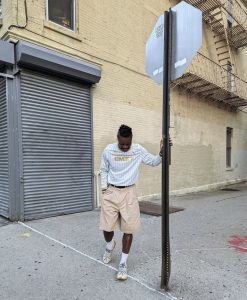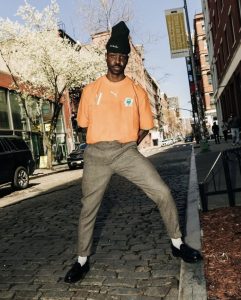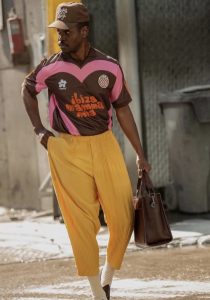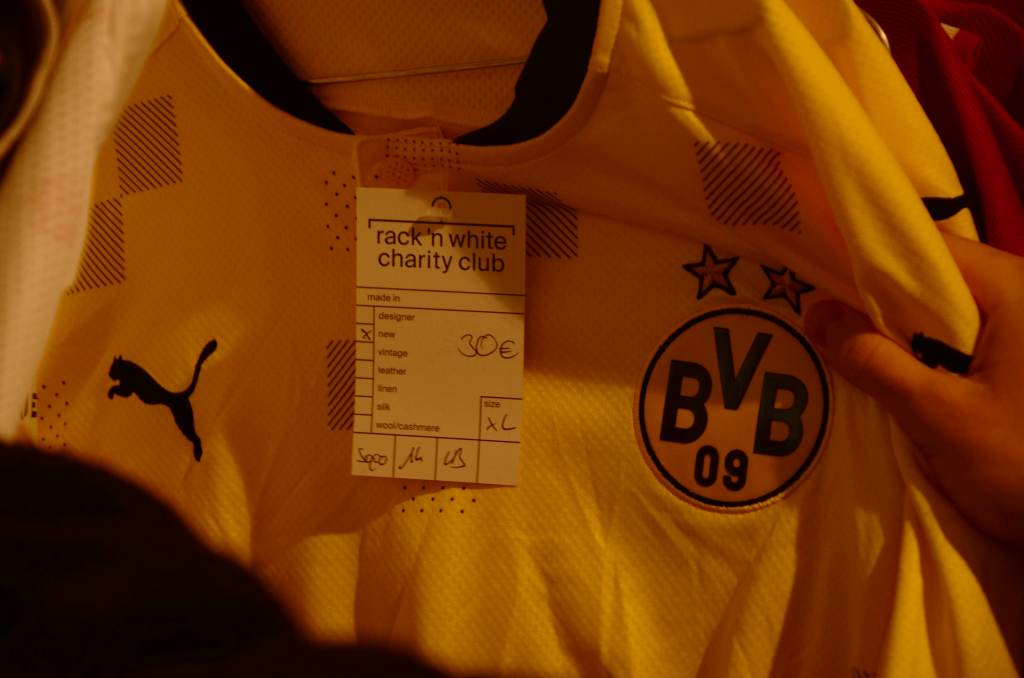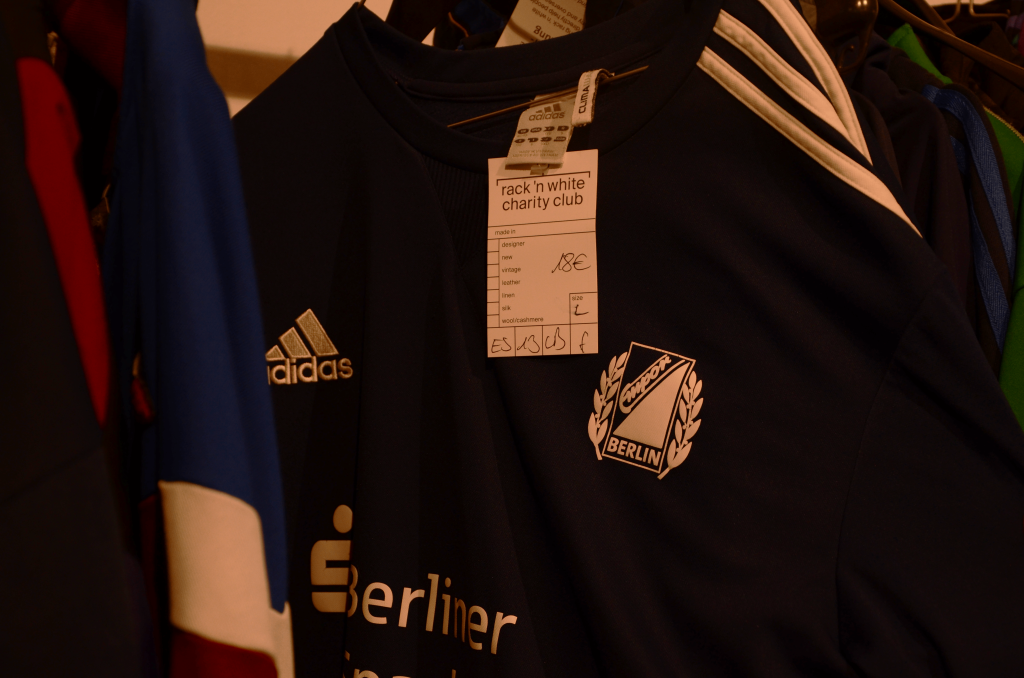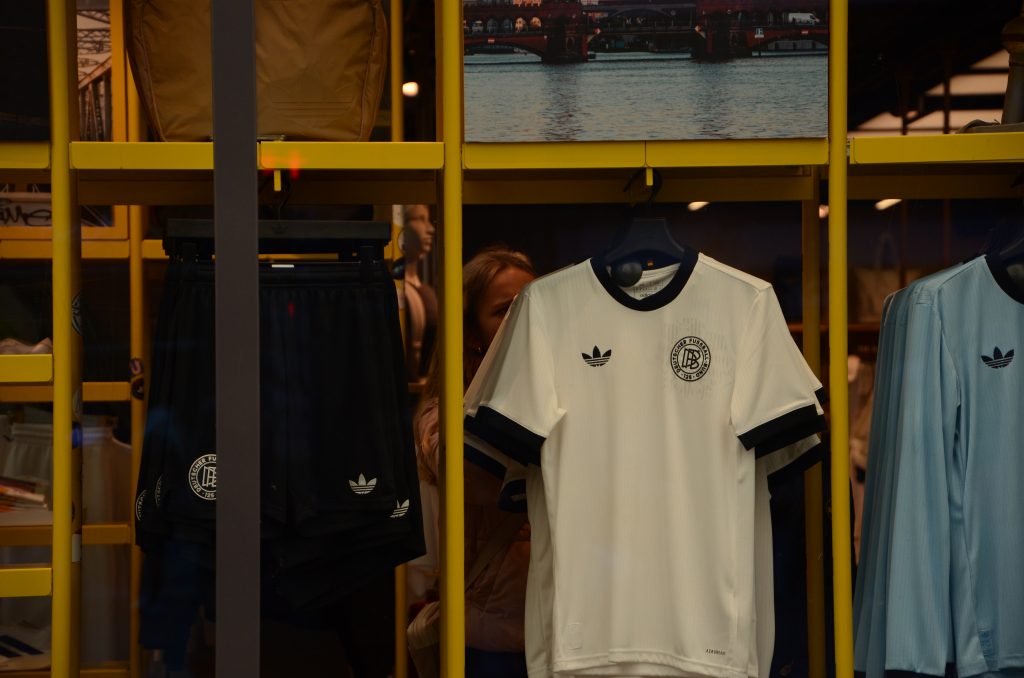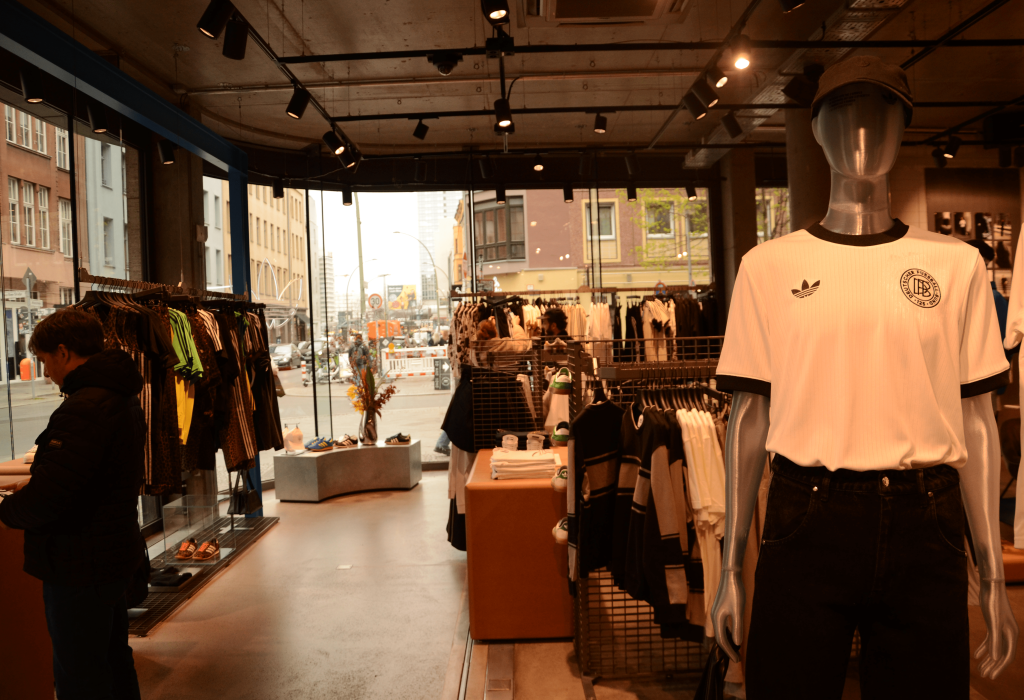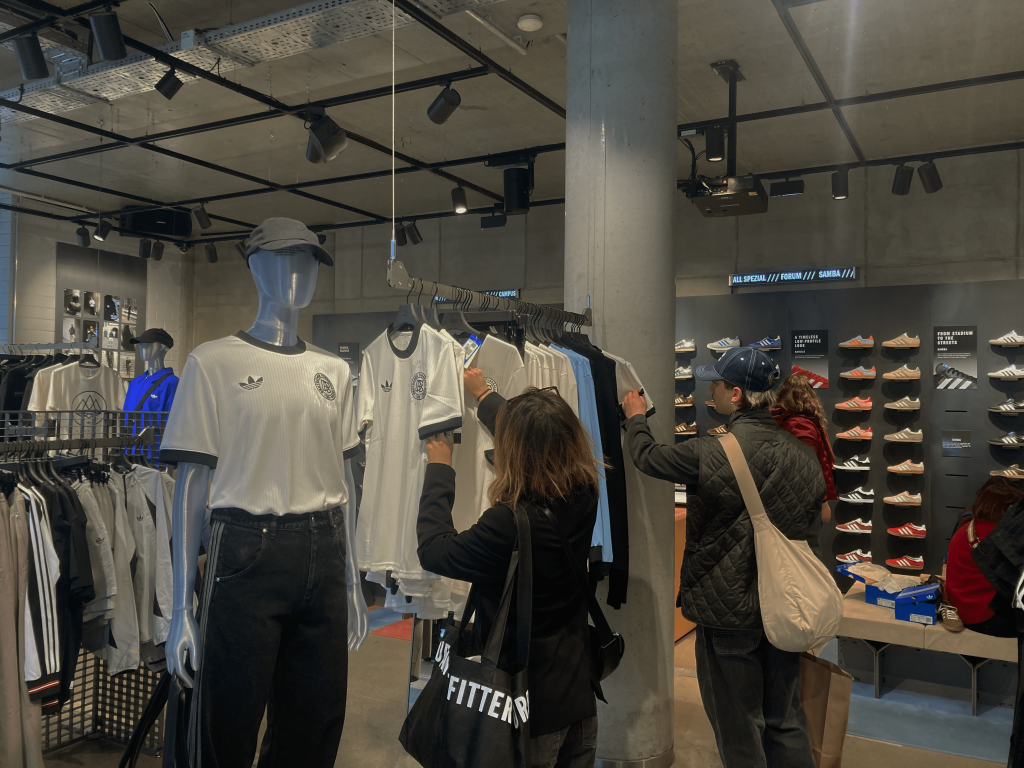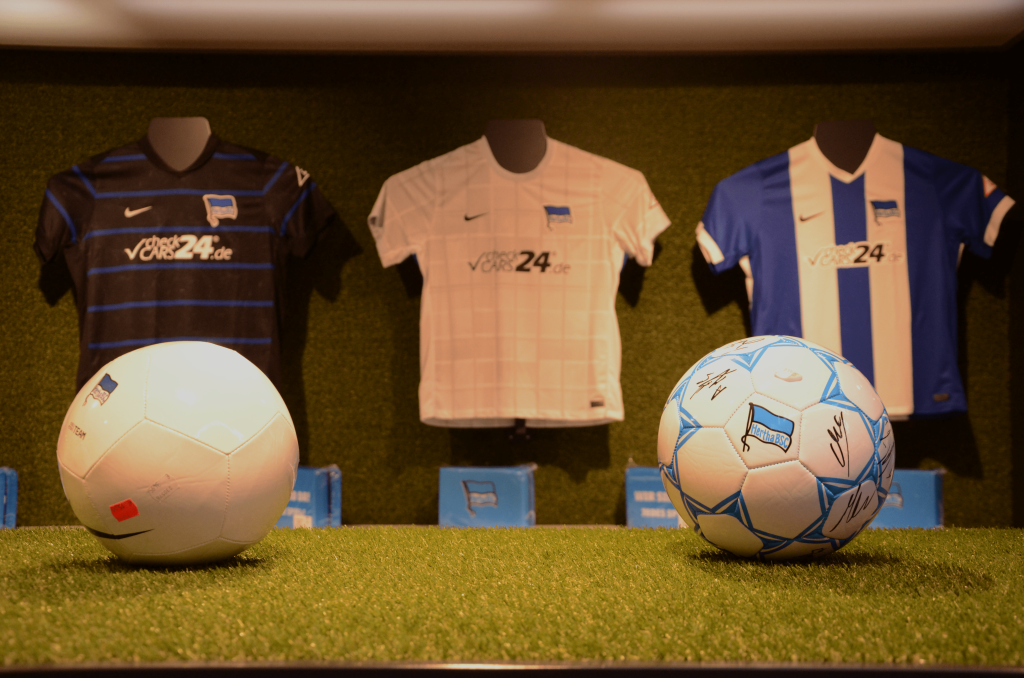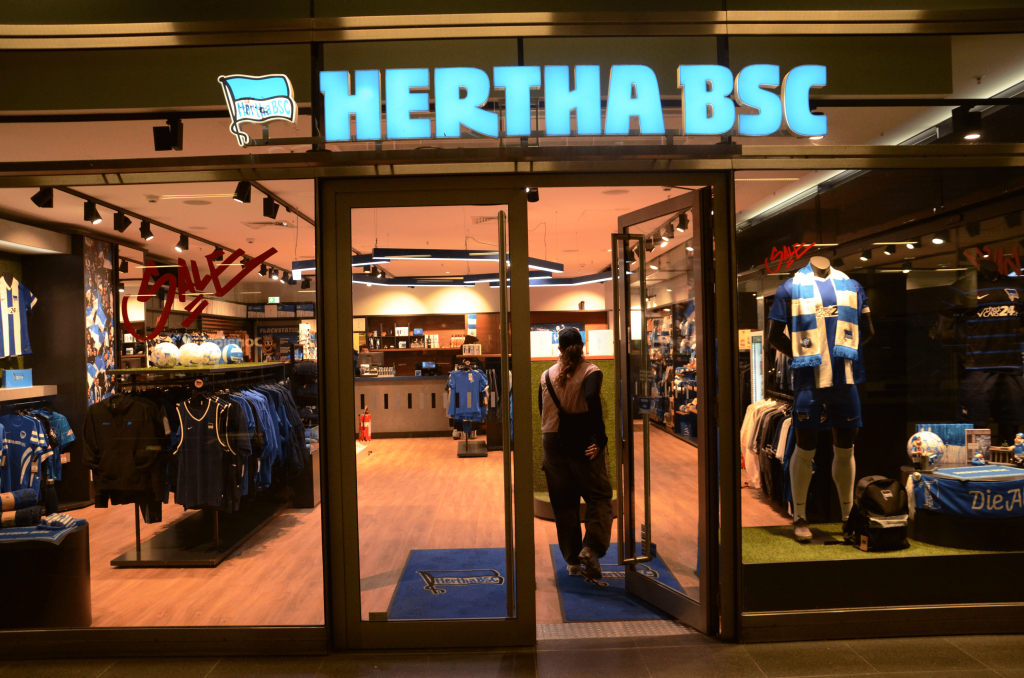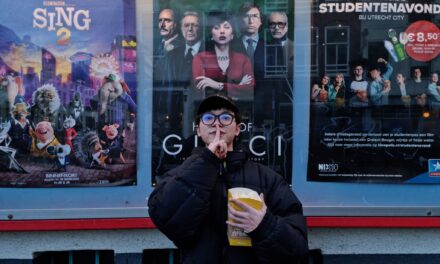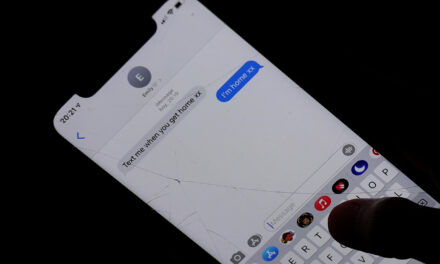For decades football shirts have only been seen at stadiums, but now they have broken free, leaving the pitches and entering the global fashion scene. Welcome to the world of “Blokecore” – an aesthetic which is slowly turning muddy football kits into a big fashion movement. “It’s not about football anymore. It’s more about the look, style, vibe and comfort,” says Berlin based Fashion expert Thorsten Meisel, who has been working in the fashion industry for 25 years.
Meisel, who moved to Berlin in 2008, recalls how the city’s fashion used to feel more expressive back then. “When I came to Berlin, people were more individual, colorful, trying to express themselves a little more. Now if you just have a look outside most of them are wearing black”. But what about football shirts? Well, They’re pretty much one of the only colorful things still showing up out there.
Football shirts bring back memories of unforgettable matches, legendary teams and iconic players. Wearing one isn’t just about rooting for a team, it’s a way to show love for the beautiful game and its unique past. While some see this as a nostalgic tribute, others see it as a form of personal style. “I think it could be both,” says Meisel, “In general it’s more self-expression. Gen-Z is too young to remember what the football shirts were back in the day because they were too young, and it’s becoming more fashionable for them. The thing for nostalgia is that the older people wouldn’t wear them, they would just have it at home, try not to get them dirty, they would just frame them.” he adds with a laugh.
On the other hand, for Gen-Z, the influence comes from runways as well. “Gen-Z is more affected by big designers like Balenciaga and Off-White,” says Thorsten Meisel. “They make a lot of sporty stuff, especially, they have football shirts in their shows. But, They are expensive, a normal shirt from Balenciaga is 700-800 euros, and Gen-Z wouldn’t spend that much money for a t-shirt,” He explains. “So they’re trying to figure out how to get dressed like them, so they buy the vintage ones instead.”
To look at this trend from a different perspective and to fully understand the intersection of sport, style, and self-expression, I spoke with Charles Etoroma, a New York-based creative director and brand strategist, who frequently shows off his personal style on instagram. With deep appreciation for football culture, football and fashion have always been intertwined for him. “My dad was really into it, it’s in our blood coming from Nigeria. My uncle played at a high level in Nigeria and made it to the national team. The love for me didn’t really come until late high school where I started experimenting with jerseys and street style” He says.
- Classic kits seen as everyday fashion. Images via Instagram – @charlesetoroma.
For him football kit culture is not just about nostalgia or fashion, it’s about embracing true identity as well. “It’s honestly a bit of all three. Loving the game is the center of it all though. I enjoy the culture so it’s really just an extension of me sharing that in my everyday outfit.” Charles also mentioned that the football shirts trend is not something new and it has always been a big thing… “It’s always been trendy, just now it’s more mainstream to wear it and the access is so much easier.”
With that mainstream popularity comes profit. While people are romanticizing the pure aesthetic of retro kits, there’s serious money behind them. As of 2024 the global football shirt market is approximately valued at $6.49 Billion and it is projected to skyrocket to $10.57 Billion by 2033 (Business Research Insights). For instance, “Classic Football Shirts”, One of the biggest UK based players in this scene, are selling around 750,000 pre-owned shirts each year, and generating up to $50 million a year in revenue.
The scale of this market is massive, but you really see the love for this trend on the streets. Especially in places like Berlin where the retro kit trend is easy to spot, you can see countless vintage stores full of football jerseys. During my stay I visited a vintage store in Mitte called “rack’n white charity club”. The place was filled with old football kits. Teams like Borussia Dortmund, Bayern Munich or even second-division clubs hung alongside Levi’s denim and vintage Carhart jackets. The prices weren’t exactly cheap, but the feeling of finding something rare and unique is probably what makes this trend appealing to people to this day.
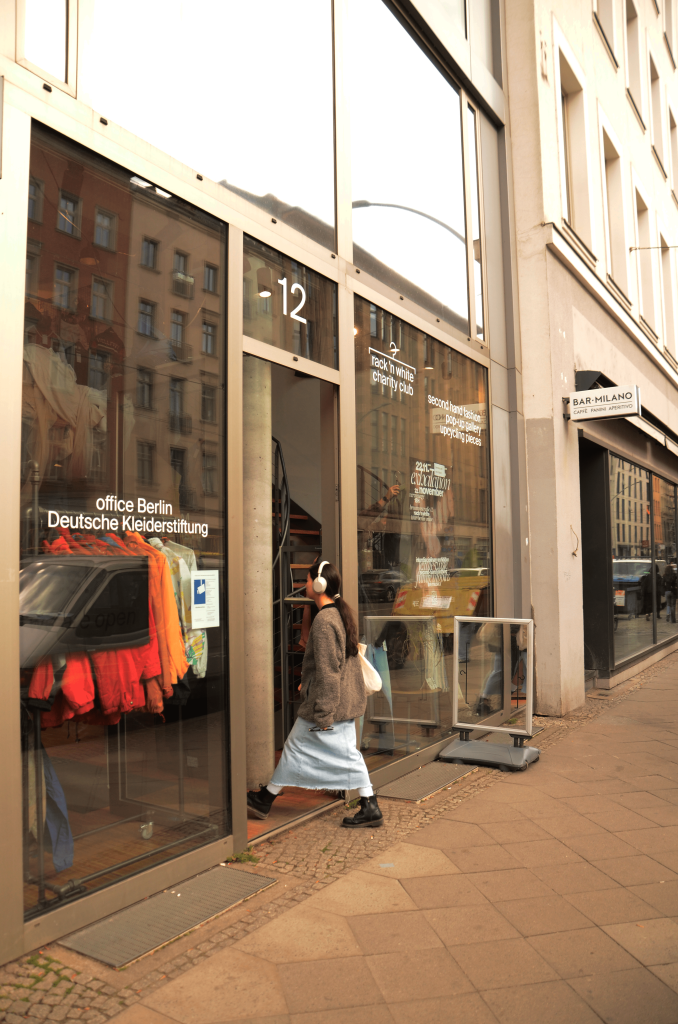
Inside Berlin’s vintage culture. Rack’n White charity shop in Mitte, A goldmine of vintage kits.
But this trend isn’t just in second-hand stores. Big brands are clearly paying attention too. Official Puma, Adidas and even the local club “Hertha Berlin’s” store in the capital also had sections showing off new kits in retro designs. Adidas, for example, had their recently released 125th anniversary kit for the German national team on display. a tribute to their iconic 1974 World Cup shirt, featuring a vintage crest and the classic Adidas logo.
- Multiple Adidas stores in berlin having German National Team 2024/25 season kit inspired by their 1974 world cup shirt.
- Hertha Berlin’s official store featuring new kits with retro inspiration.
While big manufacturers are embracing retro styles it is clear to see they’re capitalizing on the hype. These re-releases aren’t just about nostalgia, they’re part of a big business which creates tension between die-hard football fans and fashion enthusiasts. Many fans are frustrated by the rising prices of shirts. Once valued €40 at retail stores, now can be worth up to €700 based on the history behind them. Online marketplaces and resellers have driven up the market, turning what was once affordable fan memorabilia into high-demand fashion items. This change has not gone unnoticed by Charles Etoroma as well, at the end of our interview he pointed out the following: “For me, I don’t love the idea of not being a fan or part of the culture and you wearing it just for the statement, but we are seeing a lot of brands hop onto the football trend and make their own version for people who aren’t connected to the culture.”
The popularity of classic football shirts is not about trends, It’s about storytelling. Every kit has its own unique backstory and what’s most interesting is how both vintage shops and global brands are now playing the same game, but with different tactics: one is about finding old pieces of history, the other about bringing the past back in a modern way.

